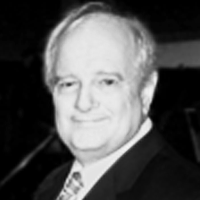Question
Are there any bony changes to the craniomandibular complex that you can expect as a patient ages? Are there any differences in children?
Answer
Yes, you do see a lot of bony changes particularly as people begin to lose their teeth. We see a lot of edentulous patients that we have had to work on. Those people have much flatter superior aspects of the condyle. Their joint spaces are a lot smaller, and there is a much more arthritic appearance on the eminence and on the anterior third of the condyle. As I said, the condyle also shrinks, and the lateral pulley erodes more. You might also see, with the big clenchers, an increased growth in the coronoid process as well as an extended girth in the ascending ramus of the mandible.
Children are interesting because we need to remember that we are not born with a temporomandibular joint. We actually create it. As a child initially grows and suckles, the sucking movement, which is kind of an oval movement and more vertical in appearance, creates the depth of the fossa itself. As a child then begins to chew, we get a lot more anterior movements as well as vertical movements, so the fossa continues to develop, but the ascending ramus of the mandible begins to move vertically and begins to appear. If you look at a newborn baby in the face, from the eyes up is half of the face and from the eyes below is the other half of the face. It is two parts. If you look at an adult, you have forehead to eyes, eyes to the upper lip, and lip to chin; in otherwise a three-part face. This is because in an adult, the ascending ramus of the mandible has actually grown as has the condyle.
The thing to remember is kind of where your patients are in their lifespan. This is why (if you have attended some of Rocky’s courses) you should only let your children suck their thumbs or suck on pacifiers for 18 months and no longer. What you have to remember in children is that the formation is growing as they move through those first few years. When you work on temporomandibular joint activity with younger children, you want to work more vertically, which is the same as with adults, but less anteriorly as you do with adults. That is really the only difference. Once we get into the adolescent years and once they have acquired the three-part face, the bony structures are the same and you can proceed the same way. Before that, you want to take care of those things I just mentioned.
